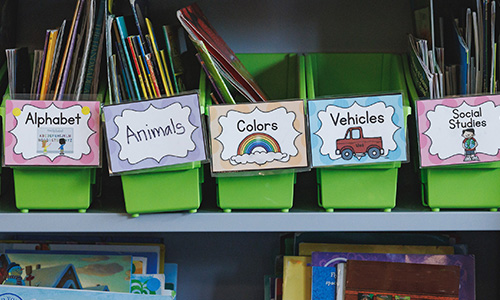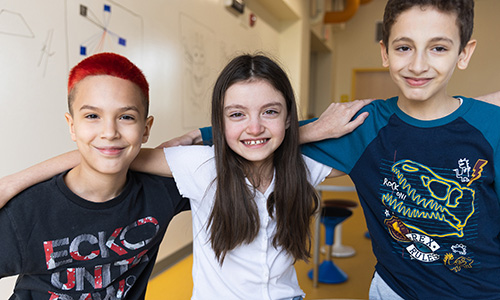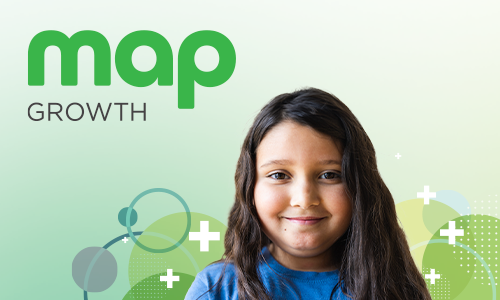 Geometry was the bane of my existence in high school. I could not get it. To this day, I continue to struggle. Just last week I needed to determine the perimeter of my new goat pen. I thought I did it correctly until I started building and found myself about five panels short. I often wonder if there were other strategies my teacher could have used to help me understand the mathematical concepts, as what we tried clearly didn’t work.
Geometry was the bane of my existence in high school. I could not get it. To this day, I continue to struggle. Just last week I needed to determine the perimeter of my new goat pen. I thought I did it correctly until I started building and found myself about five panels short. I often wonder if there were other strategies my teacher could have used to help me understand the mathematical concepts, as what we tried clearly didn’t work.
I remember being put with the same kids in the same small group over and over. Our teacher would sit with us and repeatedly explain the same concept. We knew we were the only kids not getting it, and it was frustrating and embarrassing. We were not alone in our feelings: Research has shown that students who are placed in ability groups are almost always upset with the group they were placed in, whether their ability is high or low.
Could a different approach to grouping have pushed me toward success?
Understanding student grouping
Grouping can have many benefits for students. Academically, the right kind of group can give students insights into content and strategies they are not able to have otherwise. For example, let’s think about a fifth-grade student needing extra support with determining the themes in Walk Two Moons by Sharon Creech. Placing that student in a group of other students also having difficulties identifying themes is not going to be very helpful. How rich can the discussion be if none of the students understand the text? How will their understanding of the book improve if their peers cannot describe it accurately? How isolated will those students feel when they realize they are the “low flyers” on that day?
Place that student in a mixed-ability group, on the other hand, a group where they can question their peers, discuss parts of the story they think are important, and hear their peers speak to what themes they found—now that’s an opportunity to improve that student’s academic outcomes. Emotionally, the student will benefit from not being made to feel inferior; this heterogeneous group will have varying levels of understanding to avoid having anyone feel singled out. And, socially, the student will benefit from rich discussions and collaboration, something that carries over to all aspects of life.
The right type of grouping can make all the difference.
Descriptions of student grouping methods
Student groupings are based on specific criteria. Common types include ability grouping (also known as homogeneous), mixed-ability grouping (also known as heterogeneous), and cooperative learning.
Ability student grouping
This approach groups students based on their skill level or level of understanding of a concept. The determination for placement can be made based on teacher observations, chapter or benchmark tests, and other types of assessment, including formative assessment.
We often see within-class grouping, which focuses on creating skills-based groups within a single classroom. Between-class grouping places students from different classes into groups together, again based on their ability level. And there is also the less common cross-grade grouping approach, which requires pulling students from multiple grade levels together (e.g., the high flyers from grade 3 sit with the average grade-4 student and the low-flying grade 5-student).
What does the research say about ability grouping? The jury is still out. Some argue it allows teachers to address specific needs for students and allows for focused support from the teacher. Others say the approach is ineffective and even harmful. In the 1990s, Robert Slavin compiled data from several studies on this topic and concluded there was no statistical significance in improving student outcomes when using ability grouping. A more recent meta-analysis, though, suggests that ability grouping can positively impact academic achievement.
Then there are other factors to consider. By the very nature of the way the groups are formed (e.g., based on reading level or assessment scores), the practice of ability grouping can keep some students focused on below-grade content and prevent them from grappling with content that would result in improved academic outcomes. Now add on the risks of reinforcing perceptions about students’ abilities, potentially damaging students’ self-esteem (as mine was in that geometry group), creating social stigmas, and even promoting inequities for students from historically marginalized populations who are often placed in lower groups and things get problematic.
The bottom line for ability student grouping is that there may be a time and place to use it, but it needs to be managed carefully. Ultimately, the choice is yours as the educator who knows the students and situation best. If you choose to use ability grouping, remember that the groups should be temporary. Monitor student progress closely, and adjust or disband groups when your students reach expectations. A group should never be a life sentence.
Mixed-ability student grouping
These groups pull students of differing abilities together. Since this practice avoids having all group members be “strugglers” or “high flyers,” it can improve morale by establishing a feeling of inclusiveness in the classroom. It can also help students develop empathy and understanding for others and learn to communicate with individuals who might be different from them in some ways.
Is this the perfect answer to your classroom grouping strategy? No. It may be challenging to set the groups up initially to ensure each group is heterogeneous. Making sure there are enough materials for all abilities within a group may also take extra time, and you will need to monitor the groups closely to make sure higher performers are not getting bored or frustrated and that lower performers are being treated in an inclusive way while improving their understanding.
What does the research say about heterogeneous grouping? As with homogeneous ability grouping, research reveals nuanced outcomes. In a study published in 2022, researchers found student academic outcomes improved overall using mixed-ability grouping. In another study, the data showed that lower performing students benefitted the most from mixed-ability grouping, when compared to peers. Average students, though, seemed to do better in homogeneous grouping.
Again, I encourage you to think carefully about when to use this grouping strategy, focusing on both the appropriate opportunity and who should be in each group. Mixed-ability groups should include members with different types of understanding or skills. Rather than simply dividing your class roster into “low,” “middle, and “high” and forming groups with a couple of students from each category, consider students whose strengths complement one another. Will each student in the group benefit from the way you’ve designed the group and assignment? Teachers must monitor progress closely and routinely through both their formative assessment processes and more formal assessment to make determinations on these groups and when they should be revisited.
Cooperative learning
These groups should be used to help students work together to achieve common goals. They are most often heterogeneous, but in some instances they can be homogeneous. The structure promotes individual accountability and positive interdependence while also providing a more formal path to success.
Cooperative learning groups should have established norms, which can be set by the whole class prior to grouping. There should also be clear definitions of expectations for roles. For example, the note taker should understand that the notes should be inclusive enough that other students in the group can read them with full understanding. Common roles include facilitator (guides discussion and keeps group focused), timekeeper (makes sure time is used wisely and all topics are covered), presenter (leads any group presentation to the rest of the class), and devil’s advocate (tries to anticipate potential areas of push back from those outside the group).
These groups exist as long as there is a need; once the common goal is reached, the group disbands. The role of the teacher is fairly large in the beginning, establishing protocols and assignments, leading the selection of groups, and ensuring students have access to all the materials they need to cover their content. (Use caution when forming groups. Allowing students to form their own groups can be hurtful, for example. Think back to being the last kid chosen for kickball.) Once groups are formed, you should offer support and guidance, but the bulk of the work belongs to your students.
What do studies say about cooperative learning groups? Research on this type of student grouping has revealed they lead to improved student engagement, more developed social skills, and improved academic performance. Those same researchers, along with some peers, published a follow-up study in 2014, and the results were so compelling they suggested the practices extend past education and into companies, naming them a must-have for organizations wanting to maximize staff motivation and achievement.
Effective grouping examples
Whatever type of grouping you choose, remember that it’s important you use data to inform groupings, establish clear expectations for both academic focus and appropriate behavior, and promote a positive group dynamic. Watch for occurrences of stigmatization or unequal participation. Know when to rotate groups to maximize learning in your classroom.
Our guidance for student grouping outlines best practices. Let’s also look at some use cases for each grouping type. The examples below are grade-band specific, but all three grouping approaches can be used with any grade.
Ability grouping in elementary school
Imagine you just finished teaching a grade 4 unit on comparing fractions. The end-of-module test reveals some students grasped the concept quickly and appear ready to interact with more challenging fractions, like sixteenths or sevenths. You could place these students in an ability group that would allow them to work with less friendly denominators. You could work with them on more advanced skills, like comparing improper fractions or mixed numbers.
Students encountering difficulties with the comparisons would need a group that would allow them to focus on how the numerator and denominator are represented in a visual model of a fraction. You could remind them that a fraction with a greater denominator splits the whole into more total pieces. Then the numerator tells us how many of those pieces we have. Finally, the group would work to reach the end goal of comparing fractions, using a visual model and justifying the comparison in their own words. Students could then work in mixed-ability or cooperative groups to solve a word problem involving fractions.
Mixed-ability grouping in middle school
In middle school, students of mixed ability could be grouped to work on syllabication as a word attack strategy. First, students would work together to brainstorm various ways to tackle longer words. You could drop in with hints like, “Don’t forget to chunk!” but the bulk of the work should be done by the students.
Your students could skim their current readings for multisyllabic words and practice dividing them. If there are members of a group needing extra support, have students do chin drops, placing their hand under their chin. When students read a word aloud, they will feel their chin drop with each syllable. Once they have the physical feel down, move on to encouraging them to divide the word when it is written down. It’s handy to show them that all syllables have a vowel. “Let’s look at ‘a-bol-ish,’” you might say. Or “Try ‘re-la-tion-ship.’” Kids will be amazed to notice that the rule proves to be true.
Cooperative learning grouping in high school
One way to conduct cooperative group learning is the jigsaw method. Take an American history class, for example. For classes studying the American Revolution, you would divide the class into groups and assign different subtopics to each group. So, one group would research the causes of the war, another would focus on key battles, another on important historical figures of the time, and another on the outcomes. You would assign roles for each group member and explain that each group will present their subtopic to the whole class so everyone can piece the information together and fully understand the topic. Groups can then begin research, setting their own research questions, and deciding in what format they will share their information.
Because cooperative learning groups involve accountability, social interaction, and roles, they are a great strategy to use for older students who are working toward a common goal. These students will soon be in college classes or otherwise need to work as part of a team, so having them understand group dynamics is beneficial to their well-being. Younger students can benefit from cooperative grouping as well but may need more scaffolding and direction from you.
In closing
Successful student grouping is dependent on how well you know your students’ strengths, areas of opportunities, interest levels, and personality types, so being extremely thoughtful about not only the type of group but the members of each group is key.
Thoughtful, purposeful grouping strategies can significantly enhance student learning. By understanding different grouping methods and implementing best practices, you can create dynamic and effective learning environments. There are, of course, variations of the student grouping types described in this article. I encourage you to explore beyond the basics to find productive and supportive grouping strategies that can help you meet the varying needs of your students.






